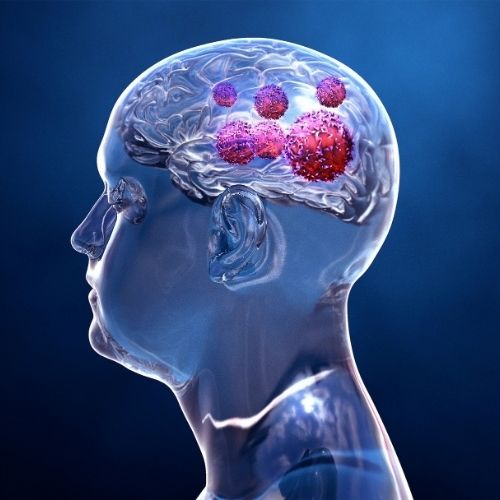What is Uterine Cancer?
What is Uterine Cancer??
One of the most common types of cancer in women is uterine cancer. Inside the uterus, there is a layer called the endometrium, which plays an important role in the menstrual cycle and the attachment of the zygote, by thickening and thinning. With the changes in the cells in this region, abnormal division and proliferation may occur. This condition is called endometrial cancer or uterine cancer.
Uterine Cancer Symptoms
Vaginal bleeding is the first symptom of uterine cancer. Vaginal bleeding experienced by women, especially during menopause, can also be considered as a sign of uterine cancer. In menstruating women, irregular bleeding and a high amount of bleeding may be among the signs of uterine cancer. In cases where uterine cancer has advanced, symptoms may include abdominal pain, pelvic pain, bloating.
Causes of Uterine Cancer
It is not known exactly what cause uterine cancer. In addition, it is thought that changes in estrogen and progesterone levels, which are hormones in the body, may be triggered. Differences in the levels of these hormones can affect the endometrium, and this interaction can lead to uterine cancer.
Risk Factors in Uterine Cancer
As uterine cancer can be seen in young individuals, aging increases the risk of cancer. Starting menstruation at an early age may also be among the reasons. Exposure to estrogen hormone for a long time is also thought to be among the factors that increase the risk. Late menopause is also among the risk factors as it will trigger extra exposure to the estrogen hormone. Obesity is also a factor that increases the risk of uterine cancer due to the production of estrogen by adipose tissue. Diabetes is also believed to increase the risk of developing uterine cancer. During pregnancy, the hormone progesterone balances and not getting pregnant can cause a risk. In this disease called polycystic ovary syndrome, estrogen level is higher than progesterone. This is a condition that increases the risk of uterine cancer. Some hormone-suppressing drugs used for the treatment of breast cancer are also thought to be among the risk factors that trigger uterine cancer. Family histories are also one of the factors.
How to Diagnose?
The individual with suspected uterine cancer goes to the doctor and first undergoes a pelvic examination. Some examinations may be necessary to confirm the diagnosis. Vaginal ultrasound imaging can be used to discover the tumor and its features in the uterus. With the probe placed at the entrance of the uterus, wall thickness and other abnormal changes can be detected. One of the important imaging methods is hysteroscopy. In this method, a tube with a fiber optic camera is placed in the uterus. This is how the endometrium and uterus are analyzed. The tissue sample taken from the uterus is subjected to some analyzes in the laboratories, and as a result, effective information about the characteristics of the tumor is obtained. This method is called biopsy.
Magnetic resonance (MR) and computed tomography (CT) imaging methods are preferred for detecting abnormal activities in the uterus or features of the tumor. Contrast material can be used to achieve more effective results in images. Magnetic resonance images are important for the course of treatment planning. Magnetic resonance is also used to determine the size of the tumor in the uterine wall and whether the fertility function is functional.
How Is Uterine Cancer Treated?
In the treatment process of uterine cancer, the decision is made by evaluating some factors such as the stage and size of the tumor, the general health conditions of the individual, the effects of the treatment that is c applied. Prominent treatments include surgery, radiotherapy, chemotherapy, hormone therapy, smart drugs, and immunotherapy. Only one of these methods can be used, or treatments can be applied in combination.
Uterine cancer surgery
One of the most frequently used methods in uterine cancer is surgery. The surgery differs according to the condition of the individual and the characteristics of the tumor. It is applied by the hysterectomy method, which is generally known as removal of the uterus among the people. This application can be performed with open method, closed method, i.e. laparoscopic or robotic surgery. If the cancer has spread to the lymphatic tissues, the infected tissues can be removed during the surgical procedure.
Radiotherapy treatment in uterine cancer
Radiotherapy, in other words, radiation therapy is used to degrade the DNA of the cancerous cell by using X-rays. This method is generally preferred to remove cancer cells found as residue after surgery. It can also be used before surgery in some cases. If the individual’s health condition is not suitable for surgery, radiotherapy may be preferred. Radiotherapy applied as a preventative is also to prevent recurrence of the disease later.
Chemotherapy treatment in uterine cancer
Chemotherapy is the administration of drugs to fight cancer cells. The aim of chemotherapy given together with radiotherapy is to increase the effectiveness of the beam and to try to prevent it from spreading to the whole body. Platinum group chemotherapy is preferred along with radiotherapy. Chemotherapy can also be administered as a preventative. At this point, factors such as weakness, vomiting and nausea, temporary hair loss and diarrhea occur as side effects. It can also be used to reduce the size of the tumor before surgery. It can be applied to prevent recurrence of the disease after the surgical operation. At this point, there are some drugs for each type of chemotherapy. These drugs can be combined in two or three ways, or they can be used alone.
Hormone therapy in uterine cancer
Hormone and hormone blocker drugs are used for therapeutic purposes in order to make the hormone balanced appropriately. This type of treatment slows the growth of cancerous cells. If the disease reoccurs, hormone therapy can also be applied. It can also be preferred in metastatic uterine cancer that spreads rapidly and has spread to different organs. It is often used in combination with chemotherapy.
Targeted therapy in uterine cancer – smart drugs
Some of the targeted therapies block the growth signal, some reduce the nutrition of the cancerous cell, and some strengthen the immune system.
Anti-vascular (anti-angiogenic) treatments
The vascular epithelial growth factor called VEGF is one of the leading factors that provide vascularization in most types of cancer. Proliferation of the vasculature allows the tumor to increase in size and the cancer to progress. Blocking this pathway is an important method used in cancer treatment.
mTOR pathway suppressors
There is a pathway called mTOR that helps cancer cells grow and multiply in the body. Agents that inhibit intracellular signaling pathway protein and prevent the spread of cancerous cells are in this group. Studies on these drugs continue today.
For more detailed information, contact us via the contact page.








